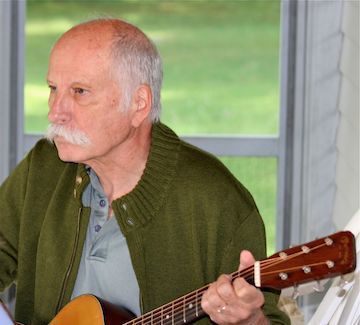By Yishane Lee and Lauren McGrath
In an interview, longtime healthcare professional Bob Kambic warns about the health risks of the over-amplification that is becoming increasingly common at recreational events.
What got you interested in the topic of the dangers of loud entertainment?
I am 75 and a grandfather. Recently I was in Detroit for an event in which my grandchildren participated. The finale of the event was held in Ford Stadium, a football venue. The electronically amplified sound was deafening even wearing my noise-canceling headphones.
The 30,000 or so people in the stadium were subject to what in other places would be called torture. I wondered, is there a way to tell the organizers they are harming our young citizens, the future of our country?
As a retired healthcare professional, I have a half century of experience in the healthcare field and more than 50 publications in peer-reviewed journals. This got me thinking about noise levels in entertainment venues. Raising awareness of this public health problem needs to be done.
Why is the music so loud?
Consider a musician playing an electric guitar in front of a crowd. She will hear her music from an amplifier. But she then finds that she likes it loud and turns the small knob up. After weeks or months that level is not satisfactory and she makes another turn up.
Over time, as the louder sounds gradually diminish hearing, it becomes necessary to turn the knob up more and more. For music professionals, this is called increasing the gain, which is one way to increase the volume of sound from the speakers. The other way to increase volume is to turn up the signal coming out of the speakers themselves.
When musicians play to big crowds they now have amplifiers and systems that produce thousands of watts of power and can project over 100 decibels (dB). This technology is also used for recorded music. It “entertains” but it also may harm the listeners’ ears. Musicians and their producers know that “loudness does not equal quality”—but that caution can get lost in the need to entertain.
By 2022, live music industry revenue is projected to be worth $31 billion worldwide, according to PricewaterhouseCoopers. Like other industries, the money is the driver. To me this means the live music industry will continue to use larger and louder electronic amplification.
The electronically amplified sound is now also ubiquitous at rallies and sporting events, both professional and collegiate—or even younger—to hype up the crowd.
What can we do to protect our hearing, and especially the hearing of children?
Earplugs. I was happy to see an article in a music industry publication saying that the purchase of custom musician’s earplugs is one of the best investments a music industry worker can make. They didn’t recommend earphones, mixers, digital equipment, or music instruments—just earplugs. Frequent concert-goers should also invest in custom musician’s earplugs.
For children, this is a tough question because kids don’t want to be told what to listen to and how loud the sound should be. But there are a variety of products for hearing protection. The first are simple foam earplugs, widely available at hardware stores, pharmacies, and online. The disadvantage is that they must be pushed into the ear canal and may not fit all size ears. (See “8 Pairs of Earplugs in 4 Noisy Settings,” next page.)
The next step up is over-the-ear earmuffs that cover the ear entirely. They are long-lasting and work well but they are also big and bulky.
Finally there are noise-canceling headphones made by audio or electronic equipment manufacturers. I use battery-powered noise-canceling headphones on airplanes and trains, and was wearing them at the event at the Ford Stadium. You may want to explore the varying prices and technology. Many can also play personal music through wireless and/or wired connections.
Besides using hearing protection, what else can you do?
Take action against unnecessary noise. Groups of parents can petition their schools and sports teams to reduce amplification at indoor and outdoor events. Decibel meters are inexpensive or free as smartphone apps and can be used to show managers and administrators the sound level at events, and when the volume reaches dangerous levels at over 85 dB.
The music and electronic sound industry is in control of this problem because of the amount of money in the industry, but also because well-known musicians such as Huey Lewis and Eric Clapton, who are open about their hearing loss, are helping to raise awareness. Media coverage and local action can bring attention to bear, and over time the industry may become aware of amplification as a health problem for everyone, including the audience, not just for those in the industry.
Bob (Robert T.) Kambic, MSH, is a retired health professional who worked at the U.S. Department of Health and Human Services and the Johns Hopkins University (JHU) Bloomberg School of Public Health. He is a current visiting scientist with the JHU Medical School Division of Health Sciences Informatics and plays and sings American traditional music using acoustic instruments.
Receive updates on life-changing hearing research and resources by subscribing to HHF's free quarterly magazine and e-newsletter.
























